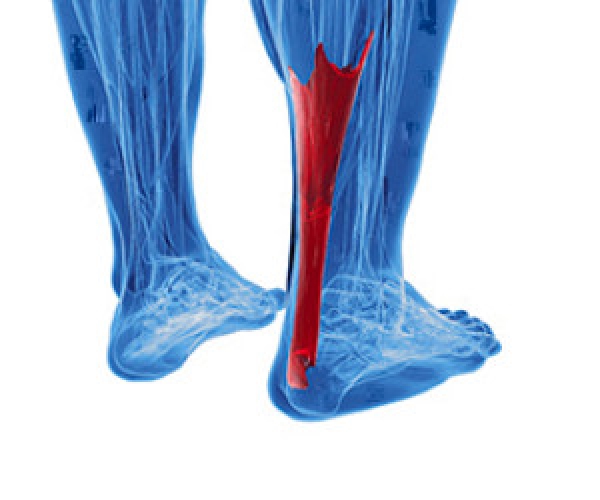 The portion of tissue that connects the calf muscles to the heel is referred to as the Achilles tendon. This tendon makes it possible to walk, in addition to participating in running and jumping activities. If this should become inflamed as a result of an injury or damage that has happened gradually, it may develop into tendonitis. Symptoms of this condition can consist of pain and discomfort surrounding the heel. It can occur if the wrong shoes are worn during exercising, if a new sport is started, or if walking and running take place on an uneven surface. When this tendon is injured, it may be difficult to walk, and the pain may be intense upon arising in the morning. Relief may be found when the affected leg is elevated, and this may help to diminish a portion of the swelling. If you have endured an Achilles tendon injury, it is strongly suggested that you seek the advice of a podiatrist who can help you to manage this condition.
The portion of tissue that connects the calf muscles to the heel is referred to as the Achilles tendon. This tendon makes it possible to walk, in addition to participating in running and jumping activities. If this should become inflamed as a result of an injury or damage that has happened gradually, it may develop into tendonitis. Symptoms of this condition can consist of pain and discomfort surrounding the heel. It can occur if the wrong shoes are worn during exercising, if a new sport is started, or if walking and running take place on an uneven surface. When this tendon is injured, it may be difficult to walk, and the pain may be intense upon arising in the morning. Relief may be found when the affected leg is elevated, and this may help to diminish a portion of the swelling. If you have endured an Achilles tendon injury, it is strongly suggested that you seek the advice of a podiatrist who can help you to manage this condition.
Achilles tendon injuries need immediate attention to avoid future complications. If you have any concerns, contact Dr. Joshua David Scoll of Pennsylvania. Our doctor can provide the care you need to keep you pain-free and on your feet.
What Is the Achilles Tendon?
The Achilles tendon is a tendon that connects the lower leg muscles and calf to the heel of the foot. It is the strongest tendon in the human body and is essential for making movement possible. Because this tendon is such an integral part of the body, any injuries to it can create immense difficulties and should immediately be presented to a doctor.
What Are the Symptoms of an Achilles Tendon Injury?
There are various types of injuries that can affect the Achilles tendon. The two most common injuries are Achilles tendinitis and ruptures of the tendon.
Achilles Tendinitis Symptoms
- Inflammation
- Dull to severe pain
- Increased blood flow to the tendon
- Thickening of the tendon
Rupture Symptoms
- Extreme pain and swelling in the foot
- Total immobility
Treatment and Prevention
Achilles tendon injuries are diagnosed by a thorough physical evaluation, which can include an MRI. Treatment involves rest, physical therapy, and in some cases, surgery. However, various preventative measures can be taken to avoid these injuries, such as:
- Thorough stretching of the tendon before and after exercise
- Strengthening exercises like calf raises, squats, leg curls, leg extensions, leg raises, lunges, and leg presses
If you have any questions please feel free to contact one of our offices located in Philadelphia, Bensalem, and Fairless Hills, PA . We offer the newest diagnostic tools and technology to treat your foot and ankle needs.

